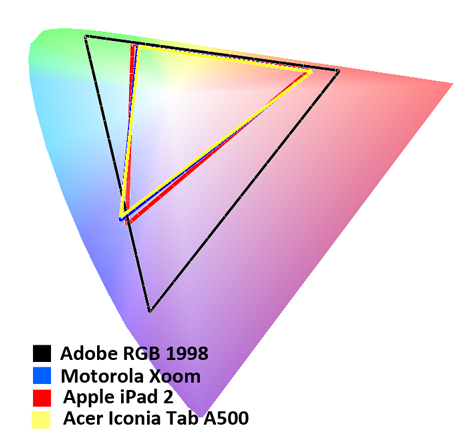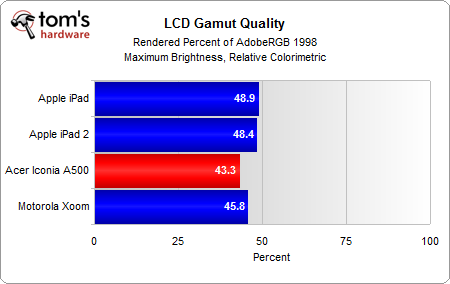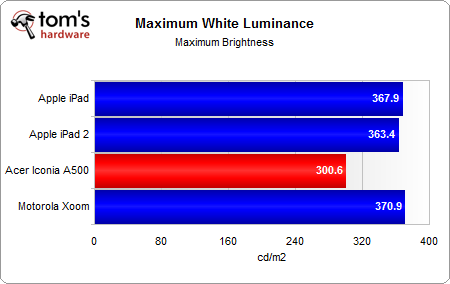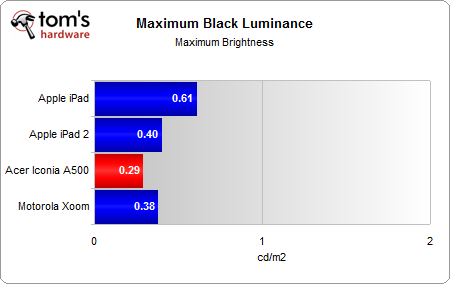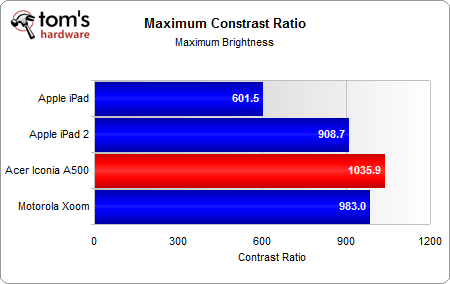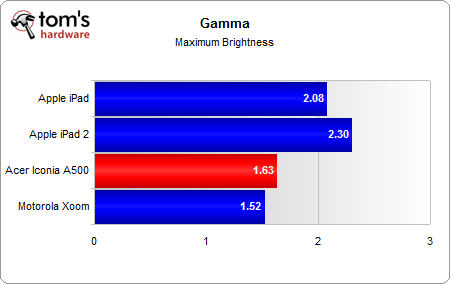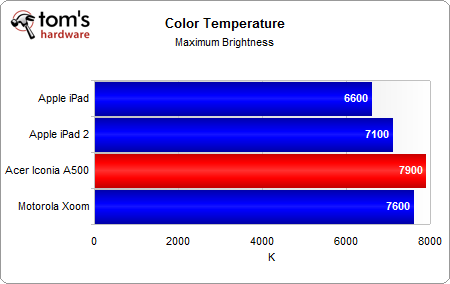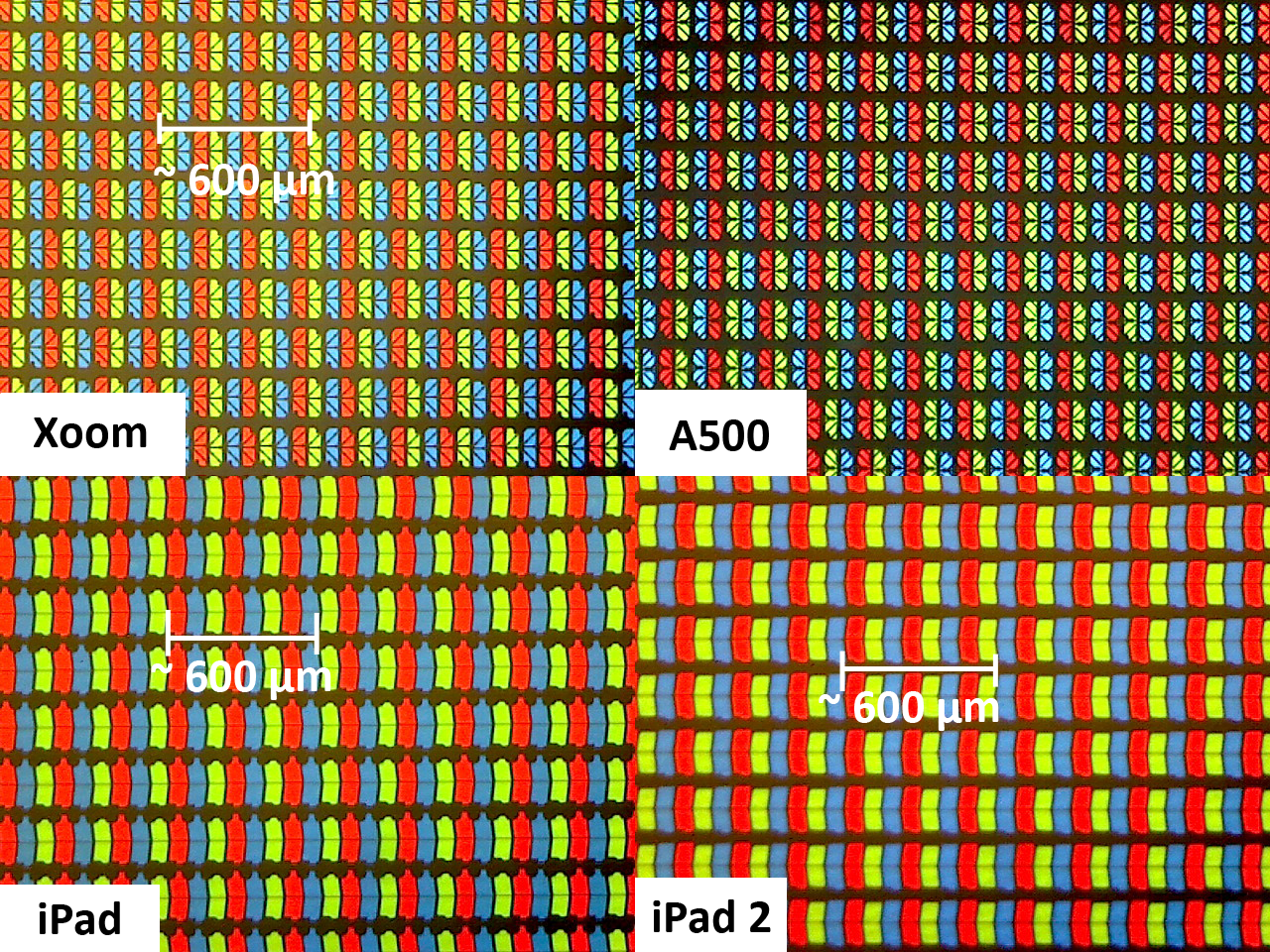Acer Iconia Tab A500: A Tablet With Honeycomb 3.1
Display Quality: Color Gamut
We don’t like to rely on subjective opinions in order to evaluate the quality of a display, but there is almost no way to benchmark the Iconia A500's VA panel. On the desktop, we have programs like CalMan and ColorEyes to test monitor performance, but these programs don’t work on mobile operating systems. Even if they did work, Android doesn’t honor ICC profiles.
Because no program currently exists to test the performance of a tablet's LCD panel, we created a custom program. Briefly, we're measuring the color gamut at the display’s native settings (native gamma and white point) with a Spectracal NIST-certified i1Pro.
Even though mobile operating systems don't honor ICC color profiles, native color management does occur at the hardware level. When a GPU sends 10 different hues of blue to an LCD only capable of displaying three, the subpixels display the closest matching color. So, in a way, smartphones and tablets behave as if they’re using relative colorimetric rendering. For more information, read Tom's Hardware Benchmarks Inkjet Printer Paper!
It's surprising to see that these tablets deliver less color quality than some cheap TN panels. More specifically, the Xoom's VA panel does better than the iPads' IPS panel in yellow highlights, but the Iconia does the worse in all highlights due to poorer white luminance.
Understand that these gamut measurements are preceded by a couple of caveats. First, we're disabling dynamic brightness because it doesn’t allow us to get an accurate (or reproducible) measurement of the display’s potential. Second, brightness is set to the highest value. If you don't use the same settings, your color gamut is going to look smaller than what we're showing here.
The Iconia A500 has a great contrast ratio due to its deeper blacks, but this is offset by poor white luminance. Furthermore, the color temperature is way too cool, resulting in a bluish white, while the relatively low gamma distorts color perception. Understand that gamma doesn't affect black or white performance, but it does affect midtones. If gamma is set too high, the midtones appear too dark. If it's set too low, they're too pale
Adobe, Apple, and Microsoft all recommend a gamma of 2.2. It's an arbitrary value carried over from the NTSC standard, but it was originally chosen because it allows colors to appear more natural in slightly dim environments. The A500's lower gamma value suggests that it's best used in a completely dark environment. Apple sets the gamma on the iPads much closer to 2.2, which is why colors appear less washed-out when you're outdoors and in well-lit spaces.
Get Tom's Hardware's best news and in-depth reviews, straight to your inbox.
Both the Xoom and Iconia A500 use a 1280x800 VA panel with ~150 PPI (pixels per inch). That's slightly better than the 1024x768 IPS panel on both iPads (132 PPI). However, under a microscope, we can actually see that the Iconia's VA panel is generating the deepest blacks. Based on the shape of the subpixels, it also appears that Acer sources its VA panel from a supplier other than AUO.
Current page: Display Quality: Color Gamut
Prev Page GPU Performance: Tegra 2 Next Page Display Quality: White And Black Uniformity
